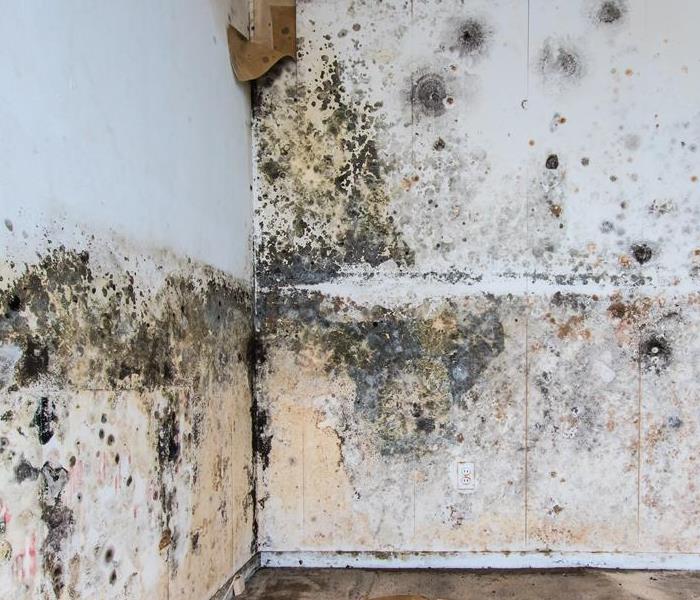Tips and Tricks for Preventing Mold in Humid Climates
5/8/2023 (Permalink)
 Follow these steps to preventing mold in humid climates. It is essential to keeping your home free from mold.
Follow these steps to preventing mold in humid climates. It is essential to keeping your home free from mold.
Mold is a type of fungus that grows in humid environments. It can be found almost anywhere and on many different types of materials, including wood, paper, carpeting and drywall. The most common types of mold are:
Black mold (Stachybotrys chartarum)
Blue-green algae (Cyanobacteria)
Mold spores are microscopic and float through the air when disturbed. They're also carried by water droplets from leaking pipes or other sources inside your home. When these spores land on damp surfaces such as wood or drywall that has been exposed to moisture for an extended period of time, for example after flooding, they begin to grow into colonies called mycelium.
These colonies look like fuzzy patches on walls or floors that may smell musty when disturbed by touch or foot traffic.
What Causes Mold?
Mold is a fungus that grows on organic matter. It needs moisture, oxygen and a food source to survive. The most common types of mold grow in warm temperatures with high humidity.
Mold spores can be found almost anywhere--in soil, dust and air conditioning systems. They're even present in your home's insulation! If you have water damage or leaks that go unnoticed for too long (or if there's simply too much moisture in the air), mold may begin to grow on your walls or ceiling.
Signs of Mold in the Home
- Musty smell
- Discolored walls
- Visible mold
Preventing Mold in Humid Climates
In humid climates, it's important to keep humidity levels low by using dehumidifiers and exhaust fans. You should also inspect your home regularly for signs of water damage.
Testing for Mold
You can test for mold in your home using DIY kits and professional tests. These kits are available from many retailers, including Amazon and Home Depot. They're inexpensive and easy to use, but they don't always give accurate results because they don't test for all types of mold or measure the concentration of spores in the air (more on this below). Also keep in mind that if you do find mold with one of these kits, it's not necessarily dangerous, it just means there's some kind of fungus growing somewhere in your house that needs attention!
Professional Mold Testing
If you want more reliable information about what kind(s) of fungi are present in your home or workplace environment, consider hiring an expert who can perform professional testing using more advanced methods such as spore traps or culturing samples from surfaces like ceiling tiles and carpeting. This type of analysis will help determine whether there is an issue with indoor air quality; if so, proceed with caution when removing any affected materials since some species may release harmful toxins when disturbed (e.g., Aspergillus versicolor).
Preventing Future Mold Growth
Repair water damage. Mold grows in damp areas, so if there's any water damage in your home, it's important to repair it immediately.
Seal cracks and gaps in walls and floors with caulk or foam sealant. This is especially important around windows where humidity can get into the house from outside (and vice versa).
Reduce humidity levels in your home by using fans for ventilation and running an air conditioner during hot weather if possible. You can also use dehumidifiers if necessary--just remember that these appliances require maintenance!
Finally, make sure you have enough lighting so that you can see what needs cleaning up around the house on a regular. Use dehumidifiers, which can be especially helpful if you have a basement or crawlspace that tends to get humid and moldy during the summer months.
You can prevent mold in humid climates by taking the right precautions. If you notice any signs of mold in your home, contact a professional immediately to have it removed before it spreads further!





 24/7 Emergency Service
24/7 Emergency Service